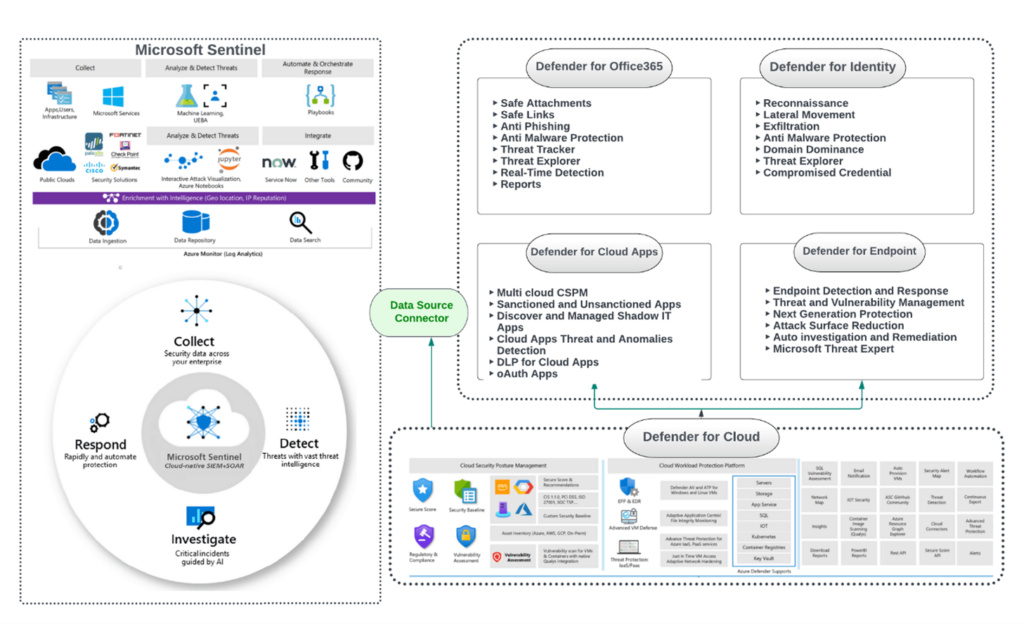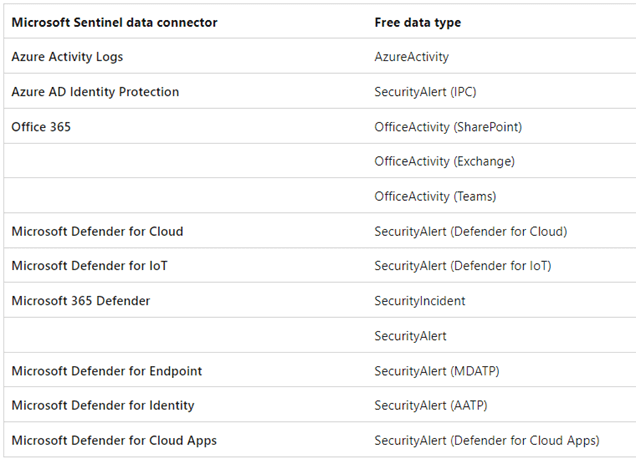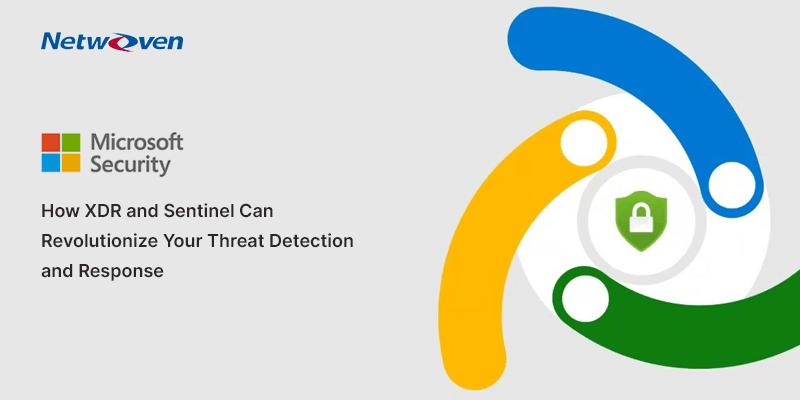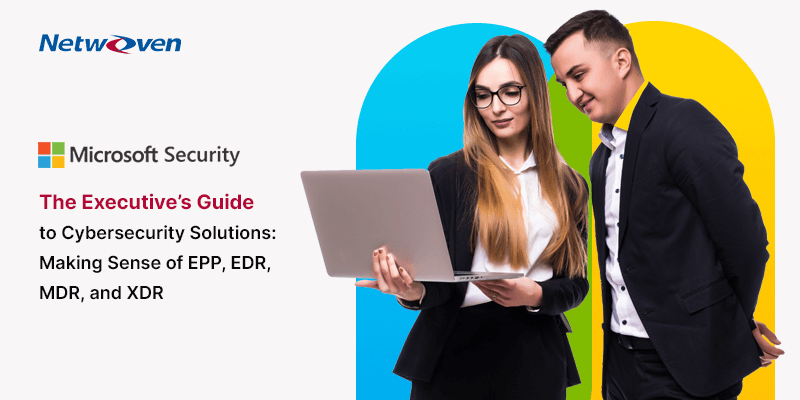As cyber threats continue to evolve and grow in sophistication, organizations need to constantly evaluate and optimize their cybersecurity investments to stay ahead of the curve. One solution that has emerged as a powerful tool in the fight against cyber threats is the combination of XDR (Extended Detection and Response) and Microsoft Sentinel.
XDR is a comprehensive security platform that collects and analyzes data from various sources, including endpoints, networks, and cloud platforms, to provide advanced threat detection and response capabilities. Microsoft Sentinel, on the other hand, is a cloud native SIEM (Security Information and Event Management) solution that leverages AI and machine learning to provide real-time threat detection and response.
Understanding the Key Components of Microsoft’s XDR Solution

Microsoft 365 Defender offers XDR capabilities by combining signals from Defender components, providing protection for different aspects of an organization’s infrastructure, and integrating with Azure AD Identity Protection. Microsoft Sentinel can aid XDR by integrating data from multiple sources, including Microsoft 365 Defender, to provide a comprehensive view of an organization’s security posture. Sentinel’s automation and orchestration features can help streamline incident response workflows and improve overall security operations efficiency.
Microsoft Defender for Cloud and Azure Sentinel work together to provide a comprehensive security solution for cloud-based environments. Defender for Cloud detects and prevents threats to applications and workloads, while Azure Sentinel collects and analyzes security data from various sources to provide a centralized view of security events. By integrating Defender for Cloud with Azure Sentinel, security teams can quickly detect and respond to security incidents in their cloud environment. Sentinel can also use Defender for Cloud’s threat intelligence to identify and block potential threats before they can cause damage. Overall, the combination of Defender for Cloud and Azure Sentinel provides a powerful and effective cloud security solution.
How is Microsoft Sentinel a top-notch SIEM and SOAR solution for today’s cybersecurity space?
Cloud-native:
Microsoft Sentinel is a cloud-native solution, meaning it is designed specifically for cloud-based environments and can easily integrate with other cloud services. This makes it a flexible and scalable solution that can grow and adapt alongside an organization’s needs.
Integration:
Microsoft Sentinel can integrate with various security solutions, including Microsoft Defender for Cloud and Azure Active Directory, to provide a more comprehensive and streamlined security solution. This integration allows organizations to consolidate security data from multiple sources, enabling them to identify and respond to potential threats quickly and effectively.
AI-driven insights:
Microsoft Sentinel uses machine learning and AI to detect and respond to potential security threats. This allows it to quickly identify and respond to potential threats, enabling security teams to proactively mitigate risks.
Automation and Orchestration:
Microsoft Sentinel includes SOAR capabilities that allow security teams to automate common tasks and responses, freeing up time and resources to focus on more critical tasks. Additionally, it allows teams to orchestrate responses across multiple security solutions, enabling them to respond to potential threats quickly and effectively.
Visualization and Analytics:
Microsoft Sentinel provides a user-friendly interface that allows security teams to easily visualize and analyze security data. This enables them to quickly identify trends and patterns, enabling them to take proactive measures to mitigate potential threats.
Understanding Microsoft Sentinel’s Pricing Model: How Much Does Sentinel Cost
Data ingestion pricing for Microsoft Sentinel is based on the amount of data ingested per day, with the first 5 GB per day included in the base price. Additional data ingestion is priced per GB, with discounts available for larger volumes of data. The retention period pricing is based on the amount of time that an organization needs to store data in Sentinel, with pricing per GB per month.
In addition to the pay-as-you-go pricing model, Microsoft Sentinel also offers a capacity reservation pricing model for organizations with consistent or predictable traffic patterns. This model allows organizations to reserve a specific amount of capacity for a set period, with a guaranteed service level agreement (SLA) and a discount for committing to a specific amount of capacity.
The following table lists the free data sources you can enable in Microsoft Sentinel.

At Netwoven, our approach to enterprise security begins with a thorough assessment of an organization’s security posture, including an analysis of existing security systems and processes. From there, the Netwoven team works closely with the organization to develop a customized security plan that utilizes the latest tools and technologies, including Microsoft Sentinel and XDR. With a customized security plan, ongoing support and training, and a focus on automation and orchestration, our security solution is suitable for businesses of all sizes. Please reach out to us for more information.























